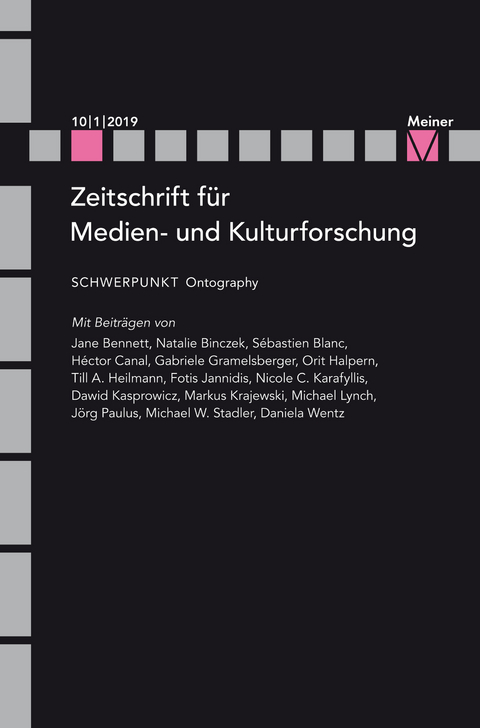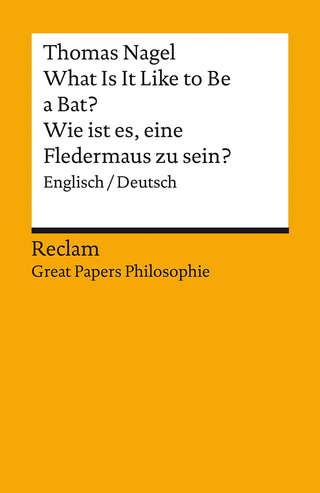Abstracts
Philippe Descola: »The tree and the grid. Remarks about the concept of transformation in structural anthropology«
Claude Levi-Strauss mentioned several times in his work that the notion of transformation is the keystone of the structural analysis he pratices. By his own admission, this notion stems from his reading of D’Arcy Thomson’s book On Growth and Form during World War II in the United States. But Levi-Strauss makes use of two very different meanings of transformation, relating to two distinct morpho-genetic traditions. On the one hand, he is inspired by Goethe’s Morphology. All forms can be seen as transformation of a Urform, an original form, from which they grow out like a tree. But on the other hand, D’Arcy Thomson’s emphasis lies on the geometric simplicity of a transformation grid that allows the transition from one biological form to the other without considering any original from which other forms would be derivable. Levi-Strauss’ epistemological choice to study myths and masks can be better understood when his concept of transformation is clearly defined in relation to Goethe and D’Arcy Thomson. Thus, the originality of his own interpretation will become clear.
Muriel van Vliet: »Morphology, transformation and translatability. A comparison of Cassirer’s and Lévi-Strauss’ aesthetical concepts«
The comparison of Ernst Cassirer’s philosophy of symbolic forms and Levi-Strauss’ structural anthropology requires a clarification of their definitions of morphology, transformation and translatability. We will expose the morphological field where Cassirer’s aesthetics emerges in relation to Goethe, who represents an important source for Levi-Strauss as well. Defining the concept of transformation is supposed to follow his modifications of the key ideas of the German poet and biologist, by taking account of the new point of view provided by the theory of groups of transformation which the mathematician Felix Klein developed in the ≫circle of Erlangen ≪. Then we will show how Edgar Wind, a brilliant student of Cassirer, invents a kind of morphological aesthetics to provide art history with a methodology, and we will give some examples for the application of the concept of building series of pictures in the field of art history. We will examine the global function of the tables of Aby Warburg’s Atlas Mnemosyne, Erwin Panofsky’s wellknown iconological interpretation of Durer’s Melencolia I and then, by contrast, the creation of a virtual series of masks through an imaginative variation which Levi-Strauss creates to give sense to a particular Ameridian mask found during his investigations. Finally, we will investigate the problems appearing by the definition of transformation as translatability in both Cassirer’s and Levi-Strauss’ semiologies. We will ask for their uses of the model of translation in linguistics to compare different forms of structural homologies.
Thomas Reinhardt: »Morphology and humanism or: how to become a cat«
Though the relationship between Goethe, Cassirer and Levi-Strauss has been explored extensively, the focus usually lies on questions of genealogy. This article aims for a different course: Building on the notable similarities between Goethe’s discussion of morphology, Levi-Strauss’ structuralistic approach and Cassirer’s philosophy of symbolic forms we will investigate the epistemological similarities between the three authors. They can be found in a specific form of humanism (or anti-humanism) which connects questions on the conditions of the world and its accessibility with the more global question of humankind and its place within the natural world, thus, by virtue of a specific interpretation of the concept of transformation, opening the door for new approaches which have recently been discussed as ontological turn.
Ralf Müller: »The concept of ›gestalt‹ as a paradigm in modern linguistics. Ernst Cassirer in dialogue with Roman Jakobson«
Ernst Cassirer’s (1874–1945) lecture ≫Structuralism in Modern Linguistics≪, given in 1945, not only represents a kind of late return to his intellectual origins in thetradition of Leibniz, Kant and Humboldt. It also provides a diagnosis of the importance of linguistics in his time. This diagnosis should prove far-sighted from the vantage point of both the history and philosophy of science. The thesis presented in this article is that for Cassirer, modern linguistics represents a scientific paradigm that encompasses various fields in academia and even transcends the divide between the humanities and the sciences, i. e. Geisteswissenschaften and Naturwissenschaften. In order to verify this thesis, the present essay analyzes Cassirer’s lecture and places him in a dialogue with the most important addressee of Cassirer’s: the linguist Roman Jakobson (1896–1982), who lived in New York at the same time as Cassirer.
Lorenz Engell ist Professor für Medienphilosophie an der Bauhaus-Universität Weimar und zusammen mit Bernhard Siegert Direktor des Internationalen Kollegs für Kulturtechnikforschung und Medienphilosophie (IKKM), Arbeitsschwerpunkte: Arbeiten zur Philosophie des Films, des Fernsehens und zur Serialität, zu medialer Ontologie, Anthropologie, Handlungstheorie und Historiographie sowie zur Theorie kinematographischer Objekte und Motive. Ausgewählte Veröffentlichungen: zus. m. Frank Hartmann und Christiane Voss (Hg.): Körper des Denkens. Neue Positionen der Medienphilosophie (Paderborn 2013); zus. m. Oliver Fahle, Vinzenz Hediger und Christiane Voss: Essays zur Filmphilosophie (Paderborn 2015); zus. m. Christiane Voss (Hg.): Mediale Anthropologie (Paderborn 2016).
Bernhard Siegert ist Gerd-Bucerius-Professor für Geschichte und Theorie der Kulturtechniken an der Bauhaus-Universität Weimar und zusammen mit Lorenz Engell Direktor des Internationalen Kollegs für Kulturtechnikforschung und Medienphilosophie. Arbeitsschwerpunkte: exzessive Mimesis, Medien des Heiligen, Kulturtechniken des Animismus, das Schiff und das Meer. Ausgewählte Veröffentlichungen: Passage des Digitalen. Zeichenpraktiken der neuzeitlichen Wissenschaften 1500-1900 (Berlin 2003); Passagiere und Papiere. Schreibakte auf der Schwelle zwischen Spanien und Amerika (München, Zürich 2006); Cultural Techniques. Grids, Filters, Doors, and Other Articulations of the Real (New York 2015).
Nicole C. Karafyllis is Full Professor of Philosophy at the Technische Universität Braunschweig. Her areas of specialization are Philosophy of Science and Technology, Phenomenology, Collection Research and early 20th century philosophy. Selected pu- blications (ed.): Biofakte. Versuch über den Menschen zwischen Artefakt und Lebewesen (Paderborn 2003); Putzen als Passion. Ein philosophischer Universalreiniger für klare Verhältnisse (Berlin 2013), Willy Moog. Ein Philosophenleben (Freiburg im Breis- gau / München 2015), (ed.): Theorien der Lebendsammlung. Pflanzen, Mikroben und Tiere als Biofakte in Genbanken (ed., Freiburg im Breisgau 2018).
Jörg Paulus ist Professor für Archiv- und Literaturforschung an der Bauhaus-Universität Weimar. Arbeitsschwerpunkte: Archivforschung, Theoretische Philologie, Medialität der Literatur. Ausgewählte Publikationen: Der Enthusiast und sein Schatten. Literarische Schwärmer- und Philisterkritik um 1800 (Berlin/New York 1998); Philologie der Intimität. Liebeskorrespondenz im Jean-Paul- Kreis (Berlin/Boston 2013); zus. mit Renate Stauf (Hg.): SchreibLust. Der Liebesbrief im 18. und 19. Jahrhundert (Berlin/New York 2013).
Gabriele Gramelsberger ist Professorin für Wissenschaftstheorie und Technikphilosophie am Human Technology Center der RWTH Aachen, wo sie u. a. das Computational Science Studies Lab aufbaut. Sie ist Mitglied der Nordrhein-Westfälischen Akademie der Wissenschaft und der Künste.
| Erscheinungsdatum | 29.05.2019 |
|---|---|
| Reihe/Serie | Zeitschrift für Medien- und Kulturforschung ; 10/1/2019 |
| Co-Autor | Orit Halpern, Natalie Binczek, Nicole C. Karafyllis, Fotis Jannidis, Markus Krajewski, Héctor Canal, Jörg Paulus, Jane Bennett, Sébastien Blanc, Gabriele Gramelsberger, Dawid Kasprowicz, Till A. Heilamann, Michael Lynch, Michael Stadler, Daniela Wentz |
| Sprache | englisch; deutsch |
| Maße | 155 x 235 mm |
| Gewicht | 402 g |
| Einbandart | kartoniert |
| Themenwelt | Geisteswissenschaften ► Philosophie ► Philosophie der Neuzeit |
| Geisteswissenschaften ► Philosophie ► Sprachphilosophie | |
| Schlagworte | Ethnologie • Kulturphilosophie • Mediengeschichte • Medientheorie • Ontologie |
| ISBN-10 | 3-7873-3697-4 / 3787336974 |
| ISBN-13 | 978-3-7873-3697-5 / 9783787336975 |
| Zustand | Neuware |
| Haben Sie eine Frage zum Produkt? |
aus dem Bereich




